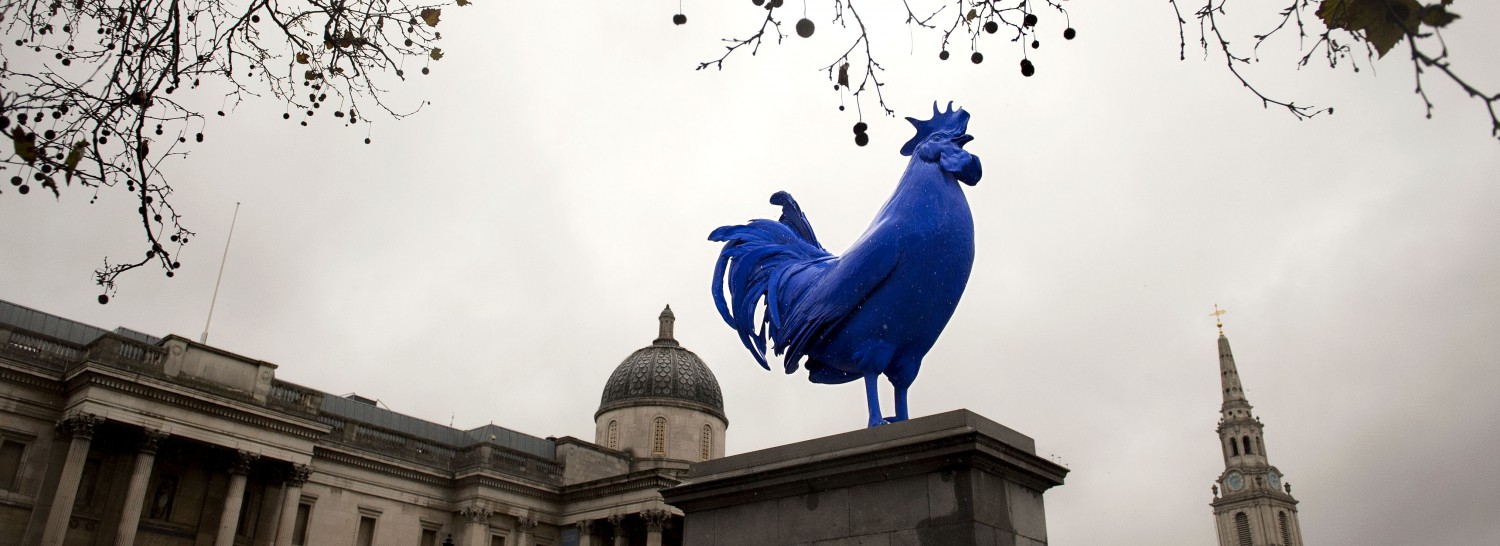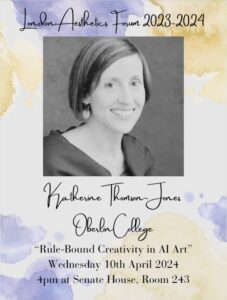Rule-Bound Creativity in AI Art
Wednesday, 10 April 2024, 16:00-18:00
Senate House, Room 243
.
In this paper I consider whether an image-making process that relies on artificial intelligence can be creative. The question is not whether human agents can use AI creatively — undoubtedly they can. Rather, the question is whether, in using AI, human agents initiate computer processes that can in themselves be creative. To answer this question, I compare a particular kind of creativity found in non-AI, or traditional, art — what I call ‘rule-bound creativity‘ — with the use of ‘Deep Learning’ (DL) systems in AI art. DL systems first categorize the features of pre-existing images in a massive training set; they can then operate without supervision to generate images with entirely novel features. Examples of DL systems include open-access ‘art bots’ like Midjourney and DALL-E 2, both of which generate images from natural language prompts. In the case of non-AI art, I argue that creators who implement the instructions of a work’s primary ‘author’ can make their own creative contributions to the final work. Then I consider whether the phenomenon of rule-bound creativity in non-AI art can provide a model for creativity in AI art. I conclude that deciding the matter of creativity in AI art ultimately depends on two things: (1) the technological and theoretical limits of generative machine learning; and, (2) the distinction between computational models of human agency and human agency itself.
.
.
Following NHS guidance, all attendees are strongly encouraged to be vaccinated (including boosters) against Covid-19, unless medically exempt. Our group is diverse; please continue to be considerate of those who wear face coverings and those who don’t. Thank you.

